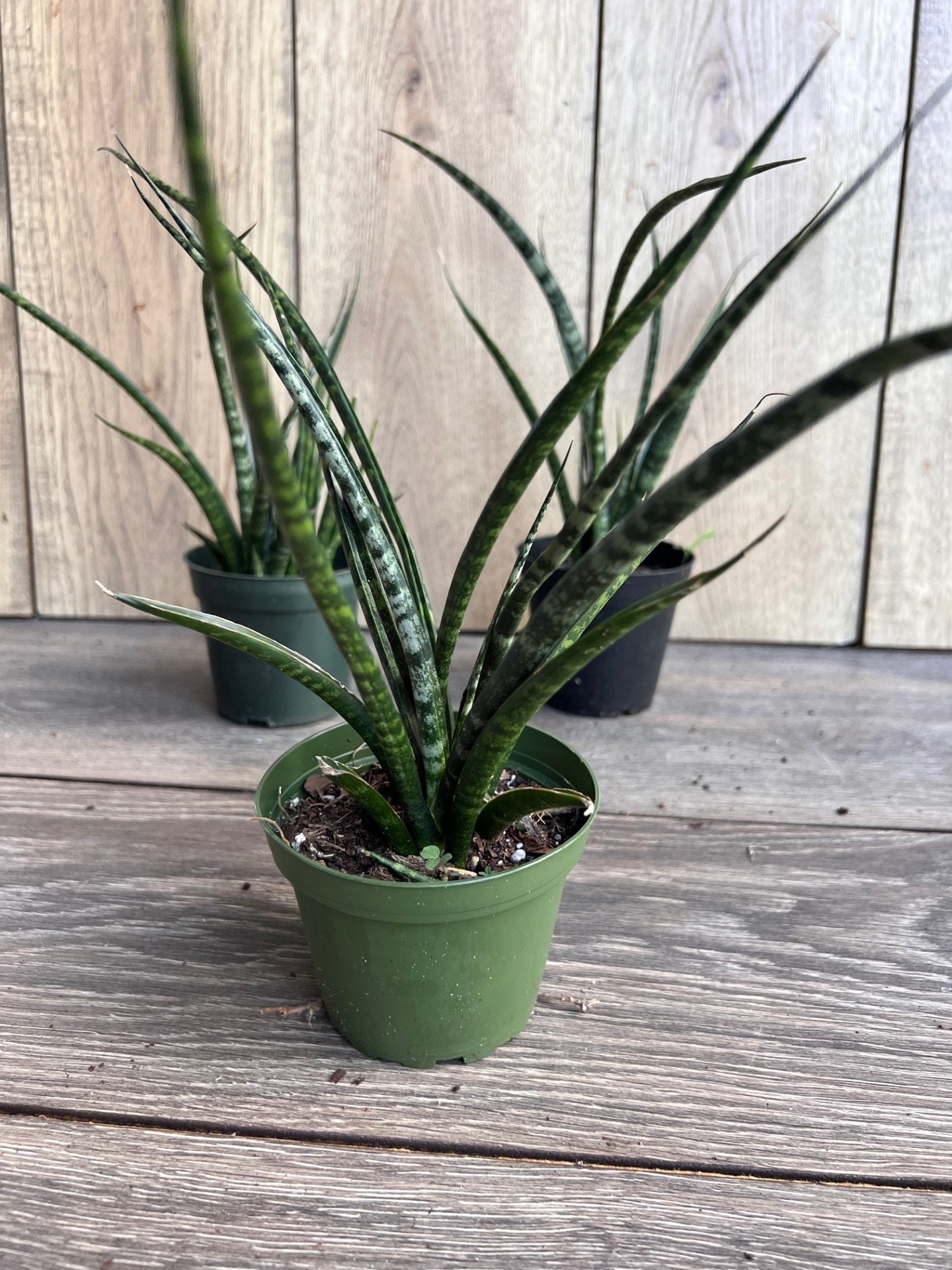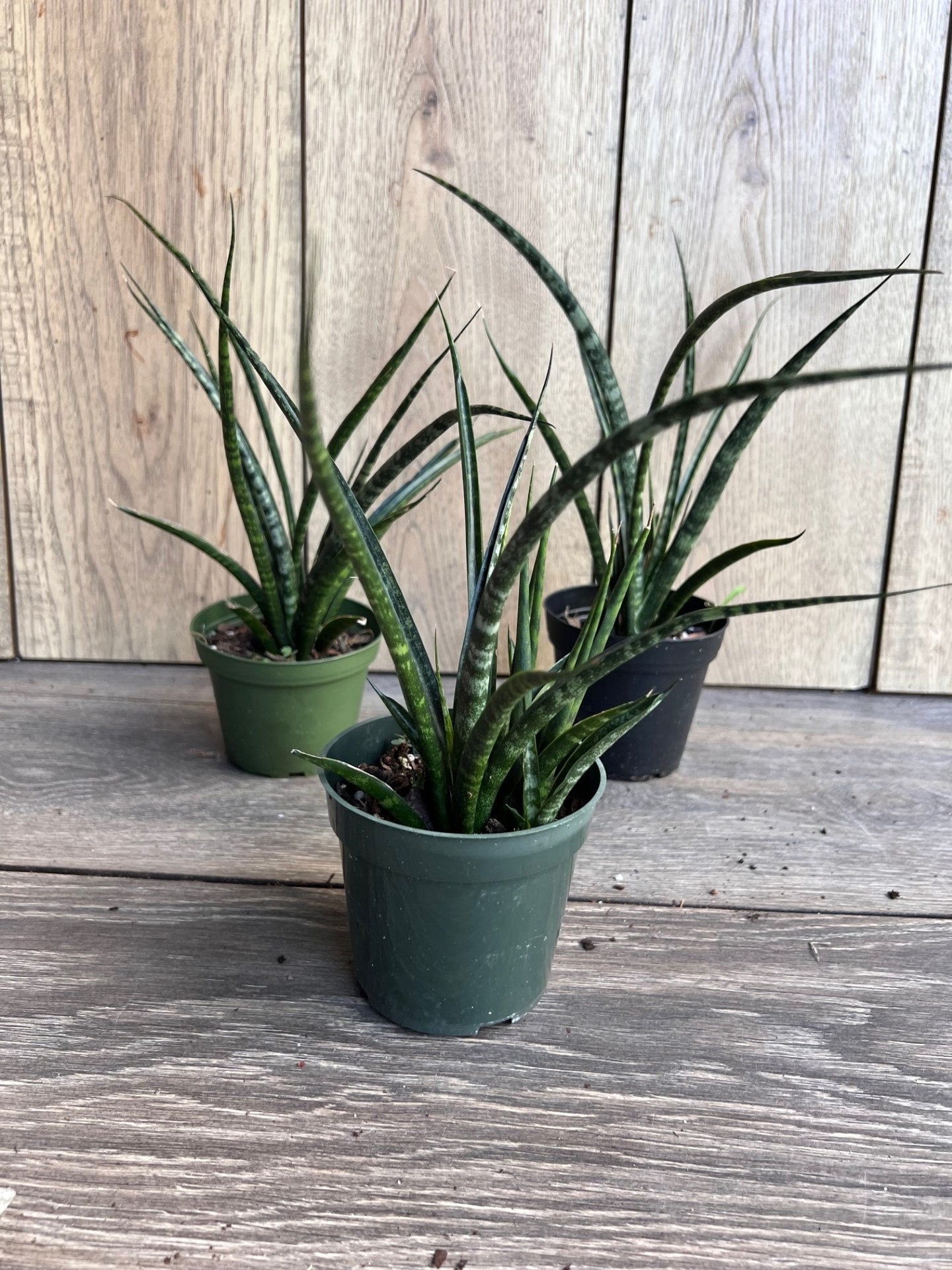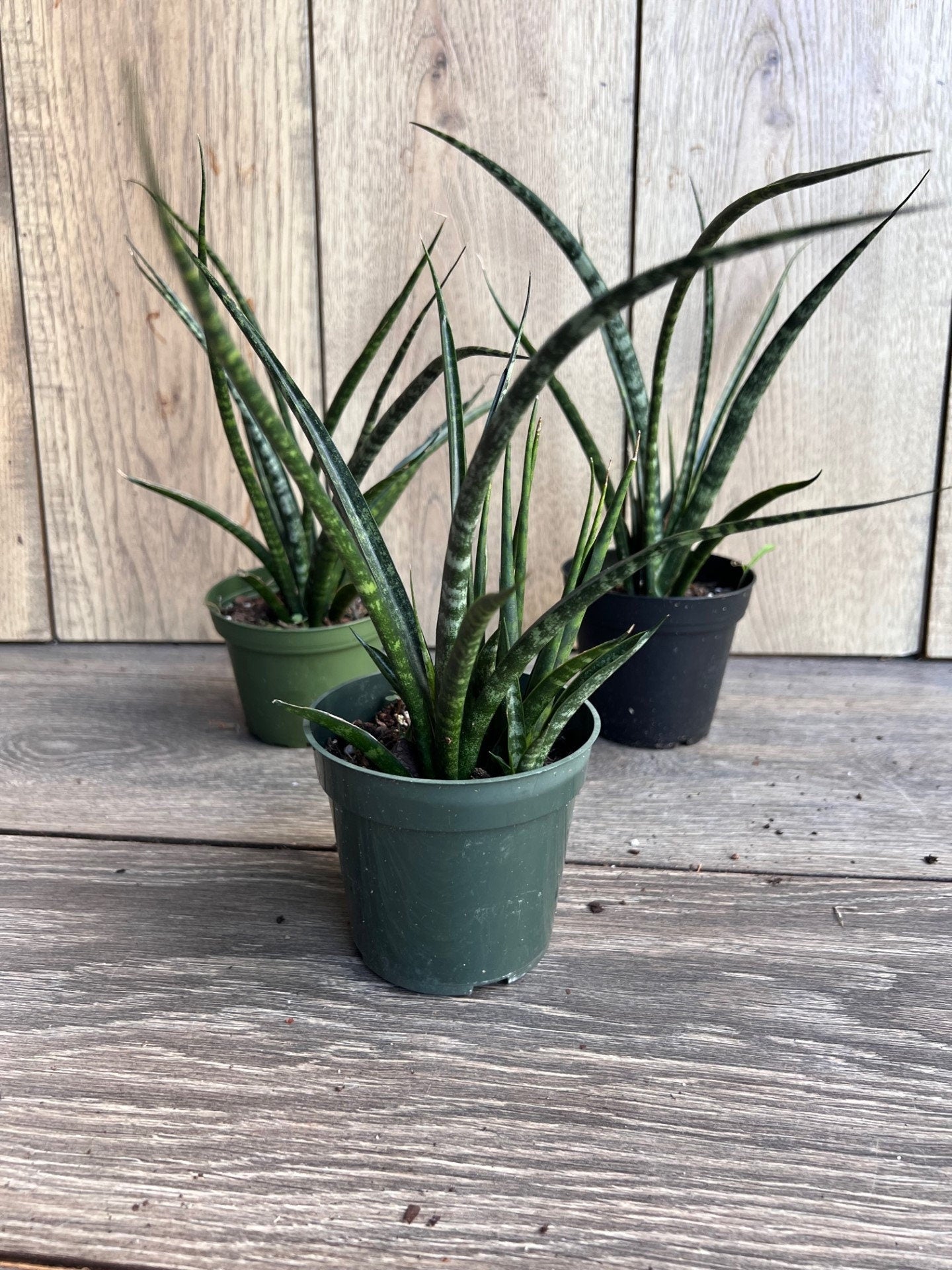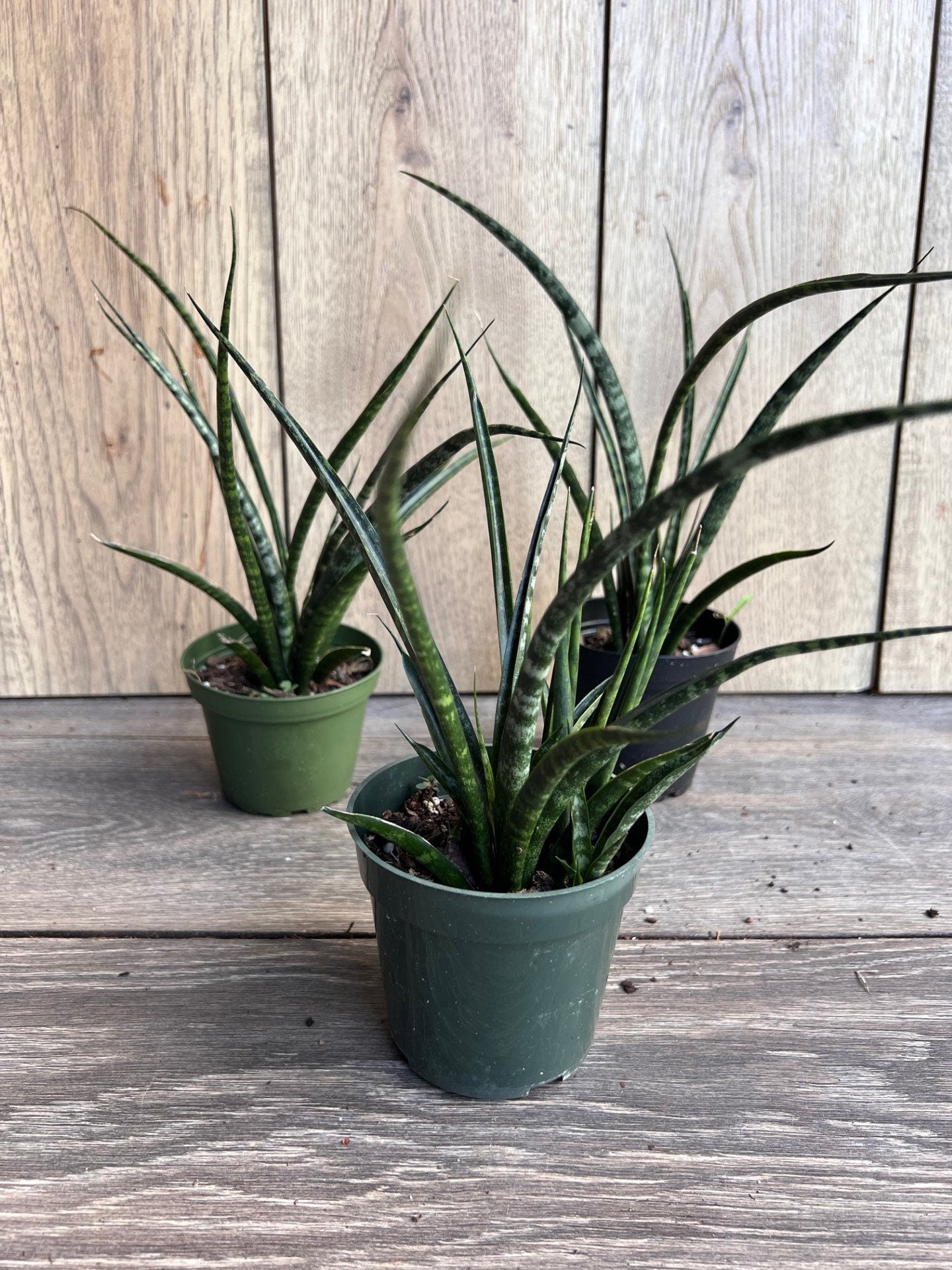Sansevieria Fernwood, Sansevieria Mikado in 4" inches pot - live air purifying plant
Sansevieria Fernwood, Sansevieria Mikado in 4" inches pot - live air purifying plant
Couldn't load pickup availability
Note: You will receive Sansevieria Fernwood , Mikado in 4" inches pot similar to the pictures
Sansevieria Fernwood, also known as Fernwood Sansevieria or Fernwood Snake Plant, is a striking variety of Sansevieria with long, slender leaves that form a rosette, often featuring a variegated pattern of green, yellow, and cream. Unlike other Sansevieria species, Fernwood’s leaves are softer and more flexible, resembling fern fronds, which is how it gets its name. It's a slow-growing, low-maintenance plant that thrives in a range of light conditions, from low to bright indirect light, making it ideal for both homes and offices. Like other Sansevieria varieties, it is highly tolerant of drought, requiring infrequent watering, and it thrives in well-draining soil. Known for its air-purifying qualities, Sansevieria Fernwood adds a touch of elegance and texture to any space while being easy to care for.
1. Light
- Low to bright indirect light: Sansevieria Fernwood is adaptable and can tolerate low light, but it grows best in bright, indirect light. Too much direct sunlight can scorch the leaves, so it’s best to place it in a spot with filtered light.
2. Watering
- Infrequent watering: Like other Sansevieria varieties, Fernwood is drought-tolerant. Water when the soil is dry, typically every 2-3 weeks, allowing the soil to dry out completely between waterings. Overwatering can lead to root rot, so ensure the pot has good drainage and avoid letting the plant sit in water.
3. Soil
- Well-draining soil: Fernwood thrives in well-draining, slightly sandy soil. Use a cactus or succulent mix, or mix regular potting soil with perlite or sand to improve drainage. This helps prevent root rot, which is a common issue if the plant is in heavy, moisture-retentive soil.
4. Temperature
- Warm temperatures: This plant prefers temperatures between 60°F to 85°F (16°C to 29°C). It is sensitive to cold and should not be exposed to temperatures below 50°F (10°C). Keep it away from cold drafts or areas with sudden temperature changes.
5. Humidity
- Average to low humidity: Sansevieria Fernwood is not particularly sensitive to humidity. It will do fine in normal indoor humidity levels, but in particularly dry environments, occasional misting may help, though it's not necessary.
6. Fertilizing
- Feed sparingly: Fernwood doesn't require much fertilizer. During the growing season (spring and summer), you can feed it with a diluted, balanced liquid fertilizer once a month. Avoid fertilizing in fall and winter when the plant’s growth slows down.
7. Pruning
- Minimal pruning: Sansevieria Fernwood doesn’t require much pruning, but you can trim off any dead or damaged leaves with clean scissors. Cutting back any yellow or brown leaves will help keep the plant looking tidy and encourage healthy growth.
8. Repotting
- Repot every 1-2 years: Sansevieria Fernwood grows slowly and doesn't need frequent repotting. Repot it every 1-2 years or when it outgrows its pot. Choose a pot that is slightly larger than the current one to allow for growth, and ensure it has drainage holes.
9. Pests and Diseases
- Pest-resistant: Sansevieria Fernwood is generally pest-resistant but may occasionally attract mealybugs or scale. Treat any infestations with insecticidal soap or rubbing alcohol. Avoid overwatering, as it can lead to root rot, which is the most common issue.
10. Propagation
- Propagation by division: Sansevieria Fernwood can be propagated by dividing the plant at the roots. Gently separate the root clumps during repotting and replant them in separate containers with well-draining soil. This method ensures the new plants maintain the same characteristics as the parent.
Share








